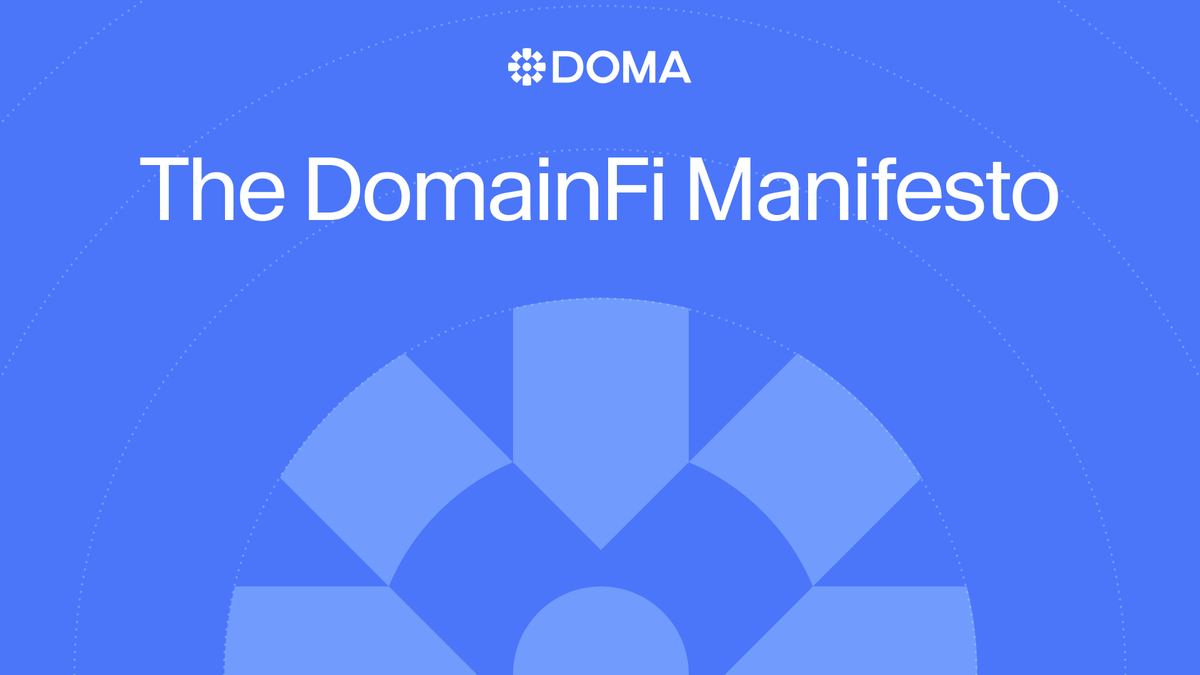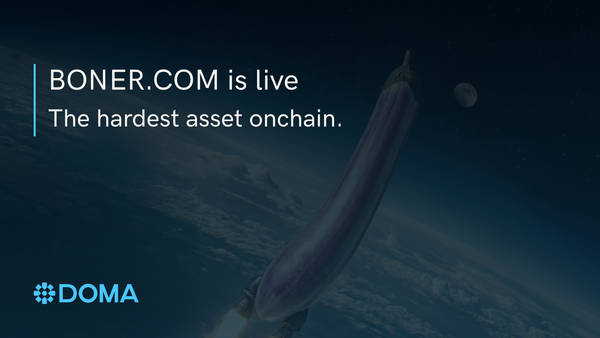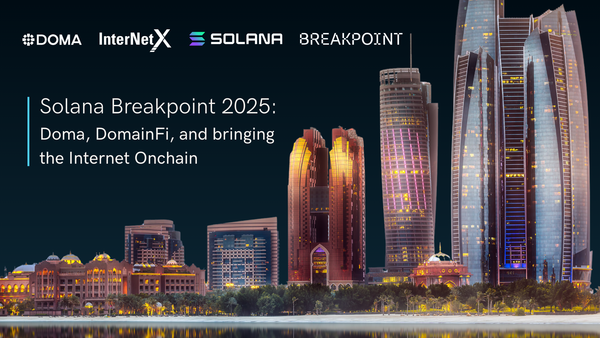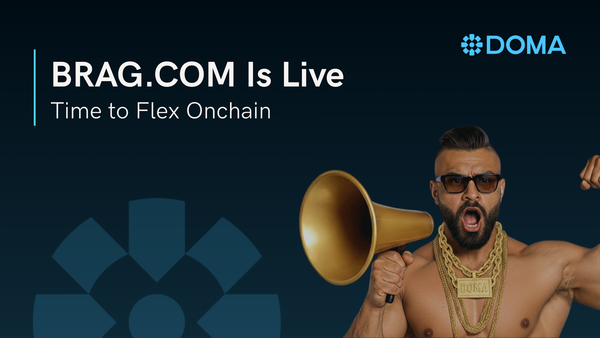Making Domains Great Again: The DomainFi Manifesto

Before social media profiles, blockchain wallets, or NFTs, there were domains.
For over three decades, domain names have been the fundamental backbone of the internet. They are universal, scarce, and instantly recognizable, the original human-readable layer of the digital world. They gave creators, businesses, and innovators a global identity, a permanent address in the digital economy.
But somewhere along the way, domains stopped evolving and certain inefficiencies in this system became more visible:
- Ownership Comes with Conditions: Domain names are technically leased, not owned outright. Users depend on registrars and governing bodies, adhering to renewal fees, compliance norms, and transfer restrictions.
- High Friction in Transactions: Buying or selling premium domains often involves brokers, escrow services, and manual processes, creating delays, high fees, and varying degrees of risk.
- Opaque Valuations and Data Silos: Domain markets can feel fragmented, making price discovery and trust-building harder. The lack of transparency is a major roadblock for many potential buyers.
It is easy to label this as a "broken system," but the fact is that these are just the natural byproducts of an infrastructure designed for a different era. An era before programmable assets, decentralized networks, and trustless transactions.
Web3 has brought promising solutions to these issues. Smart contracts, decentralized registries, and onchain transactions offer a glimpse of what frictionless and programmable domain ownership could look like. Lower fees, transparent markets, and programmable rules for transfer, leasing, or collateralization are real advantages in the Web3 toolkit.
However, Web3 has its own set of challenges:
- Fragmentation: Competing blockchain systems and lack of unified standards have led to a siloed ecosystems where interoperability becomes impossible, both within Web3 and with traditional web infrastructure.
- Limited Real-World Integration: Most Web3 domain systems are not natively compatible with browsers, email clients, or mainstream digital infrastructure.
- Security Risks: Web3’s open nature has given rise to scams, fake assets, and vulnerabilities, undermining trust in decentralized name systems.
The reality is this - neither traditional domains nor Web3-native solutions have fully solved the ownership, transferability, and interoperability puzzle of the domain ecosystem.
True evolution in the domain space will require collaboration, not competition, finding ways to build on the strengths of various infrastructure systems and ecosystems while addressing their blind spots.
This is a multi-billion-dollar opportunity no one saw, until DomainFi and Doma unlocked it.
Our Approach: Introducing DomainFi and Doma
We’re not here to replace DNS. We’re here to extend it, to transform domains for the next chapter of the internet.
- DomainFi: DomainFi is a Web3 liquidity layer that lets you tokenize your domains to unlock new DeFi primitives like passive income generation, lending, and fractional ownership.
- Doma Protocol: Doma is a purpose-built L2 blockchain that enables DomainFi. It bridges and tokenizes domains between Web2 and Web3 by abstracting the infrastructure complexity of decentralized domain custody and DNS compliance. Doma enables domains to become composable real-world assets ready for global distribution, monetization, and innovation by registrars, investors, and builders.
Our Principles
- We’re not here to rebuild DNS.
- We’re here to make it work better for the modern internet by building bridges.
- We want to help registrars unlock access new channels and revenue streams.
- We want to help domain investors unlock new liquidity.
- We want to give developers access to a new class of programmable assets.
- We want to give Web3 users real identities that work on the internet and across chains.
Why Now?
- Because the battle for digital ownership is happening right now.
- Because identity fragmentation and liquidity gaps are slowing down innovation.
- Because creators, developers, and users deserve tools that don’t tax creativity or lock them into someone else’s platform.
- Because the next evolution of the internet belongs to creators and builders, not gatekeepers.
What We Believe
Domains are the OG NFTs
The domain name system is the original internet identity layer, and it’s time we bring it onchain. Before handles, usernames, or NFTs, domains were the first form of online identity.
However, they have remained disconnected from Web3. Doma bridges this gap without compromising the legacy trust of DNS and ICANN.
Tokenization shouldn’t require you to give up what already works.
Using Doma, it will be possible to wrap domains with onchain functionality without breaking DNS, without changing registrars, and without compromising the rules of ICANN.
Tokenization was never meant to be a “replacement.” It’s an augmentation.
Why can’t domains be liquid?
One of the biggest problems with traditional domains is the lack of liquidity. As a domain holder, you shouldn’t have to wait years to make a single sale of a premium domain. With DomainFi, domains can tap into financial primitives and be used as collateral or as payment rails. Domains can now generate yield, just like real estate or any other high-value digital asset.
Decentralized apps deserve real human-readable naming.
Long wallet addresses, ENS lookalikes, and custom .xyz hacks don’t scale. Instead, why not use your actual domains as your Web3 frontend, login credentials, payment portals, or smart contract interfaces, across chains?
Current Naming Services Aren’t Enough...And That’s Okay
Web3 naming services like ENS helped popularize the idea of decentralized namespaces, but they fall short for real-world usage.
- They don’t resolve on the internet.
- They face name collisions with traditional DNS and alt-root providers.
- They aren’t cross-chain compatible.
With Doma, investors, organizations, and builders get usable, DNS-based domain infrastructure that works both onchain and online without compromise.
Interoperability isn’t optional
Doma is chain-agnostic and interoperable by design. Whether you operate on Solana, Base, or Avalanche, our goal is to make tokenized domains composable across all major ecosystems. No lock-in. No fragmentation.
The Market Opportunity
DomainFi sits on a massive, underutilized market. Despite being a mature $340B+ asset class, domains today remain largely illiquid.
The core opportunity lies in unlocking this latent value, turning static domain names into programmable, composable financial instruments. Imagine highly liquid domains that can be easily integrated into the DeFi ecosystem as tokenized assets
By enhancing the domain industry with Web3 financial rails, DomainFi taps into both the $100B+ Web3 identity market and the trillion-dollar opportunity of global digital assets.
The “How”
Doma Protocol tokenizes domains through smart contracts that embed programmable logic while preserving registrar control and regulatory compliance. These tokenized domains function as onchain assets, tradable, and composable, yet remain bound to the registrar’s authority and ICANN-governed lifecycle.
- Ownership records, lifecycle states, and registrar permissions are kept synchronized between blockchain systems and existing registrar infrastructure, guaranteeing consistency across both environments.
- Token attributes are permissioned, allowing registrars to manage issuance, transfer rights, and modification access within predefined compliance frameworks.
- Critical governance functions, including dispute resolution, revocations, and regulatory enforcement, are handled through registrar-administered controls embedded directly into token operations.
This essentially creates a powerful hybrid model where domains move effortlessly between traditional and decentralized ecosystems, unlocking new revenue streams for registrars and liquidity options for domain holders.
Unlocking the Full Potential of Domains
The internet’s future won’t be defined by a single winner from Web2 or Web3. It will belong to platforms and communities that evolve, adapt, and create new value by working across both worlds.
With Doma, we aren’t rewriting the rules. We are simply empowering domains to become dynamic and liquid assets where they move with users, across networks, with the same trust they’ve always commanded.
The next era isn’t about disruption, it’s about realizing the untapped power of what we’ve had all along. Making that real means more than defining a vision. It means working with registrars, investors, and users to Doma to meet real-world demands for security, compliance, and cross-chain integrity.
In Part 2, we’ll walk through how we designed Doma as a production-grade protocol shaped by industry needs, hardened through rigorous reviews, and validated by some of the best security minds in Web3.




